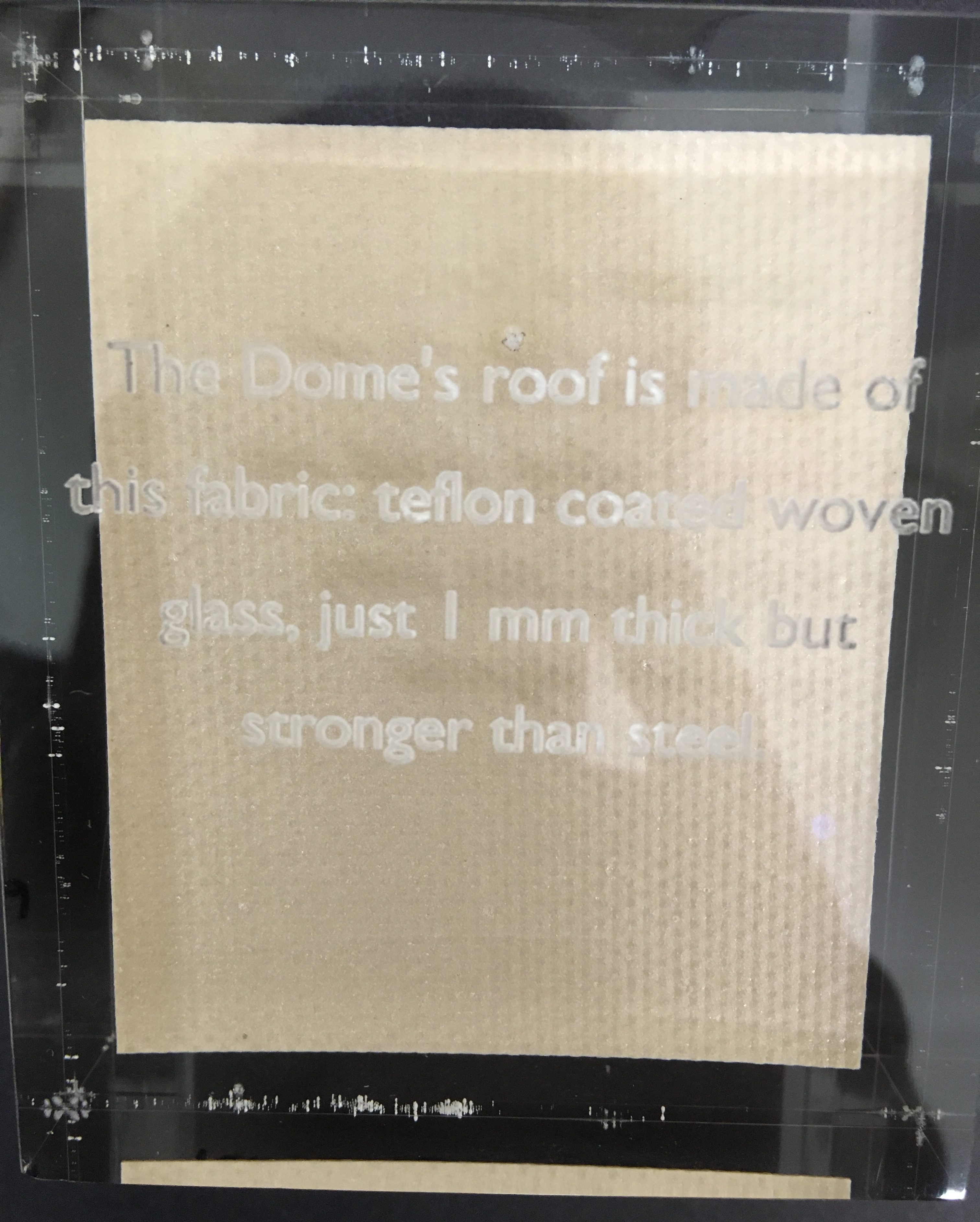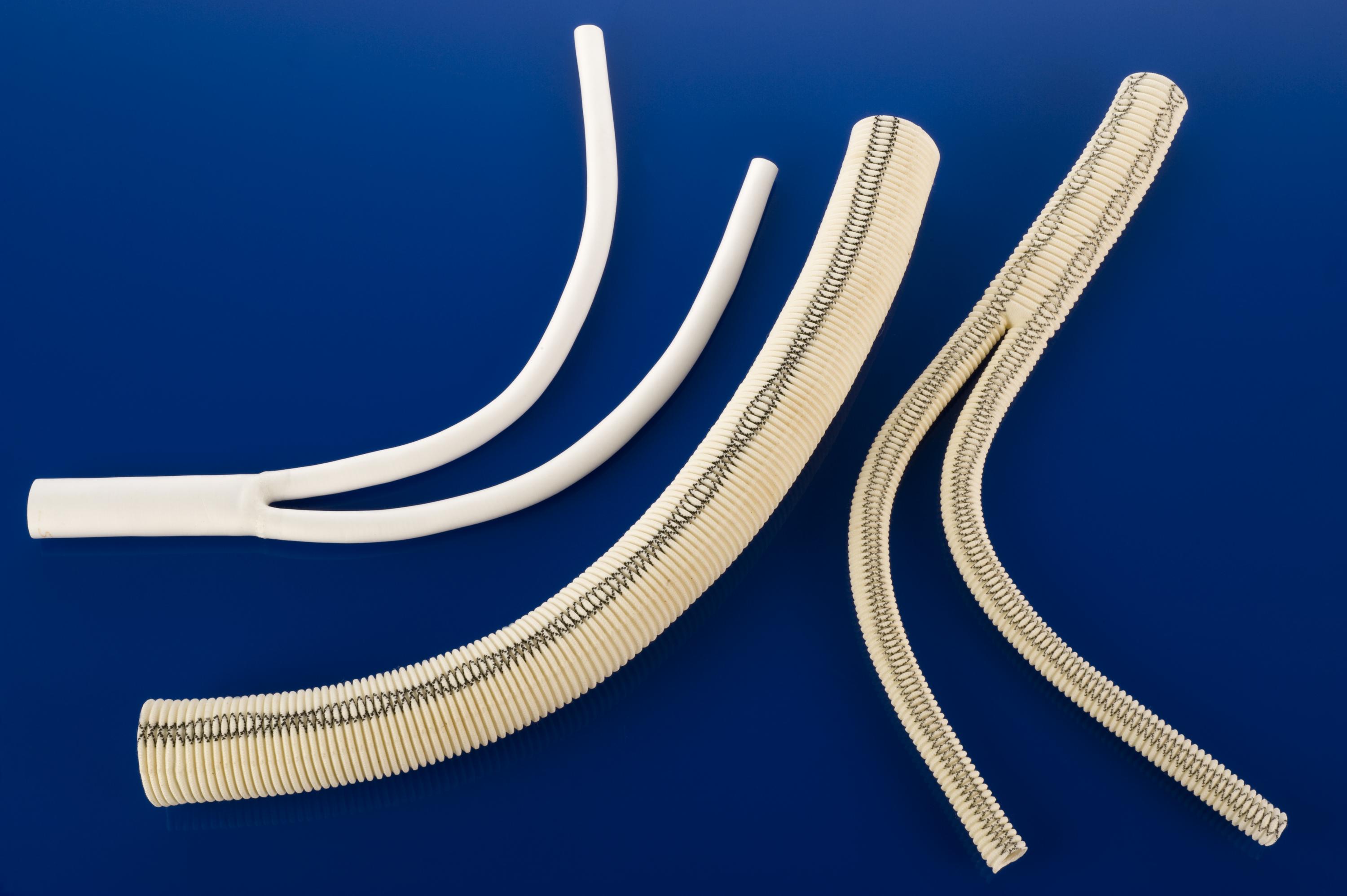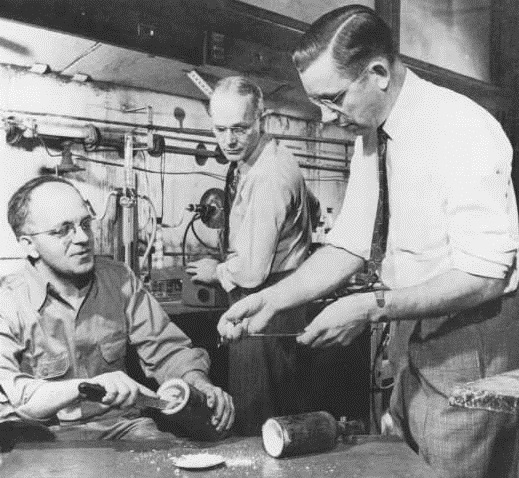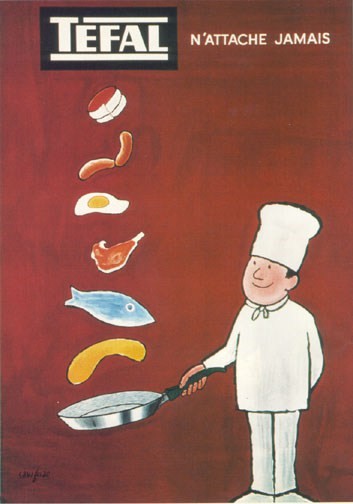While Teflon is best known for non-stick pans, it has many other applications, from NASA spacesuits to wind turbines. The Science Museum has some eclectic examples, such as this piece of the first British artificial ski-slope from mid-1970s Torquay.
The Museum also has in its collection a paperweight made from the same glass-fibre, dipped in liquid Teflon, as the roof of the Millennium dome.

But perhaps its most beneficial use to us is medical. Due to its bacteria-inhibiting properties, Teflon is the material of choice for surgical catheters, prostheses, grafting and artificial body parts.
A stunning example of a set of synthetic arteries is on display in the Science Museum’s Who Am I? gallery. They were manufactured by the US chemical giant DuPont.

80 years ago today, 27-year-old Roy Plunkett was investigating a new refrigerator chemical at DuPont’s research laboratory in Deepwater, New Jersey.
Plunkett, who from humble upbringings on a farm during the Depression became a research chemist with a PhD, suddenly noticed one of his canisters of TFE gas was unaccountably devoid of gas. Yet it weighed as if it was almost full of the stuff.
Like any curious saw-wielding chemist, Plunkett sawed the canister open, finding a smooth, waxy white solid inside. The gas had reacted with the canister.
It was the birth of PTFE, a new synthetic plastic with very useful properties: resistant to corrosion, could withstand higher temperatures than other plastics, and, in terms of friction, one of the slipperiest of all solids. Fresh of the success of nylon, DuPont had done it again.

Credit: Hagley Museum and Library
The Second World War transformed PTFE into the patented, commercial product that we now know by its brand name Teflon.
The industrial scaling-up of Teflon resulted from the Manhattan Project, where it was used to coat the uranium-storing equipment in the production of the atomic bomb. By 1948 DuPont was making 900 tons of Teflon per year.

It was a French woman in 1954 that had the idea that Teflon would make a good cooking pan surface. Colette Grégoire told her engineer and fishing-aficionado husband as much, after observing his use of Teflon on his fishing gear. Two years later Marc Grégoire launched Tefal, a portmanteau of Teflon and aluminium.
As we are becoming increasingly aware of the environmental impacts of the plastics that have transformed human society, there have been concerns about the potential health risks associated with PTFE manufacture and its products.
Although some have allayed the fears of using PTFE-coated pans, while others remain deeply concerned, there isn’t enough evidence yet to make certain conclusions either way. I wasn’t too fussed about bacon-gate, but I would find it difficult if my IKEA non-sticks were confirmed carcinogens too…